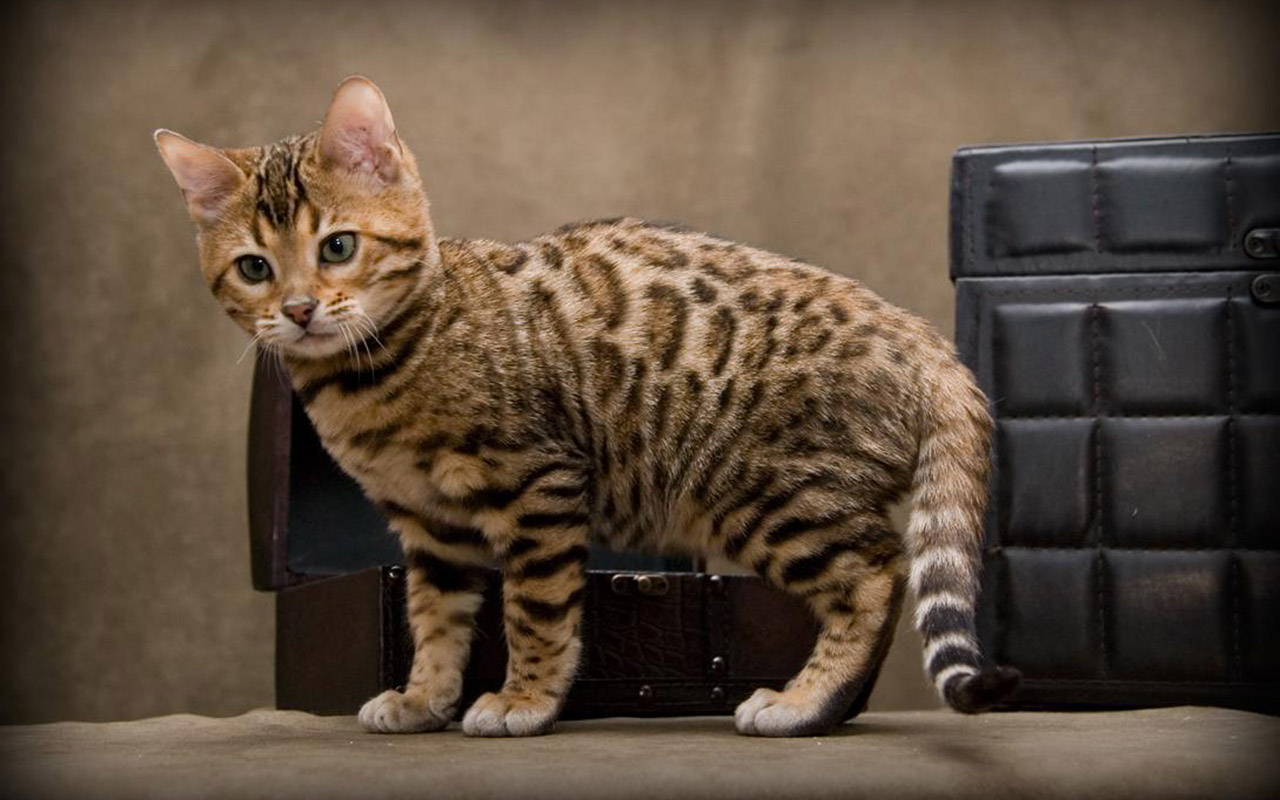
The Breed History
This is a recently developed American breed. In 1963, hybridization
of the Asian leopard cat (Prionailurus bengalensis) and domestic
cat was carried out. The original cross arose out of a research
initiative by geneticists to explore natural resistance to FeLV. The
breed was derived from eight hybrids selected from this project.
Outcrosses to Egyptian Mau, Indian Street cat and domestic cats
occurred. Early hybrids were not easy to tame, but the breed has
been progressively selected for amicability.
A five generation breeding history is necessary for registry as a
Bengal, and within that pedigree a maximum of one Asian leopard
cat may be present. Bengals with greater than four generations of
inter-Bengal breeding are referred to as SBT (stud book tradition)
Bengal cats. Earlier filial (F) generations are technically still referred
to as Leopard cat crosses or hybrids, and are not typically sold for
the pet market, though some placid fourth filial generation cats
(F4s) may be sold to experienced cat owners. The F1 cats (F4 or later
crossed back with wild cat) are referred to as foundation cats. Some
states have restrictions in place against F1 and F2 cats. The TICA
registry was the first to accept this breed but stipulated at that time
that show cats be at least F4s.
Physical Characteristics
Weight: female 10-15 lb (4.5-6.75 kg), male 10-22 lb (4.5-9.5 kg)
Coat: The short, dense, soft coat is usually brown tabby, blue
tabby and snow tabby, with marbled or spotted patterns with an
autosomal dominant inheritance pattern. Marbling is a swirling
of color produced by combination of the wild type rosette with
domestic classic tabby. The spotted pattern is most common.
Hair texture is silky. Spots should be very distinct and large, and
a necklet or necklets should be present on the throat, with a
"jawstrap" extending between the mandibles. Tail is spotted or
ringed and the tip is black. In marbled cats, the marking color is
enhanced by a darker outline color to the spots (rosettes). Belly
must be spotted. Colors accepted may vary with the registry. Glitter
refers to a high gloss gold or pearl sheen, and is not required, but is
desirable. Kitten coats may not mature until 6 months of age.
Eyes: Variable colors; gold, hazel, green, and blue; large, wide set.
Points of Conformation: This large cat has a fairly small head with
an elongated modified wedge. Muzzle is broad, whisker pads are
pronounced. Ears are short, wide set and rounded tips. The nose
is broad and has a slight puff in profile. Limbs are long with good
bone/ heavy muscling. The muscular body is long. Tail is thick and
tapers. Paws are large and rounded.
Grooming: Low grooming needs; just provide weekly chamois rub
down or light brushing.
Recognized Behavior Issues and Traits
Reported breed characteristics include: Affectionate, athletic,
curious, happy, intelligent, and outgoing. Very active, they love to
climb and jump; they need a climbing tree or post; a high energy
pet; will fetch and will usually take to leash walks if introduced
early. The Bengal likes lots of human contact. Though in shows, mild
fear response is acceptable, those that show signs of challenge are
disqualified. Bengal cats have variations in voice and other atypical
vocalizations, and they are considered very vocal. They love water.
They are good with older children. Some may learn to open doors.
Normal Breed Variations
Reduced fertility in early filial generations: F1 males are usually
sterile, and F2 and F3 males have reduced fertility.
Bengal Kitten Information Project An Internet-based
breeder survey was carried out to establish normal baselines for
reproduction.
55 reporting breeders, 176 litters, 701 kittens,
July 2003 to June 2004.
Average litter size 4.0
Stillbirth rate 6%
C sections 3%
Average birth weight: Male 94 g female 92 g
Congenital defects included: flat-chested, cleft palate.
Blood Type: In a small study done in the UK, 4 of 8 cats tested as
part of a survey were blood type AB, and the other four were type A.
A group has been working to map over 500 genetic markers in
Bengal cats. Study announced in 1998.
Drug Sensitivities
None reported in the literature
Inherited Diseases
Flat-chested Kittens: Similar to the flat-chested condition
in Burmese (see Burmese chapter), whereby reduced chest
dorso-ventral dimension occurs. This trait is seen with some
frequency in Bengal cats and is seen in F1 kittens, so it is not the
result of inbreeding (Pers. Comm., Dr. Solveig Pflueger). Signs may
include poor weight gain, exaggerated cranial thoracic vertebral
kyphosis, vomiting, dyspnea, cyanosis, exercise intolerance and
cough, and a ridge along the costo-chondral junction of the ribs.
As kittens mature, and the rib cage calcification completes, clinical
signs abate in many of those kittens that were less severely affected
and thus not euthanized in the neonatal period. Though recognized
by breeders, the flat-chested kittens have not been reported in the
literature. Signs are often first noted at 7-10 days of age.
Pyruvate Kinase (PK) Deficiency: Autosomal recessive disease
causing hemolytic anemia. See under Abyssinian. A genetic test is
available.
Disease Predispositions
FIP Susceptibility: An American study found that Bengal cats
were significantly over-represented for a diagnosis of FIP when
they analyzed data for a 16 year period at a veterinary teaching
hospital.
Rare and Isolated Reports
Ulcerative Nasal Dermatitis: Of 48 Bengal cats seen in a Sweden
clinic between 1999 and 2003, six cats had fissured, crusted and
ulcerated erosive changes to the nasal planum. Age of onset
was between 4 months and 1 year. Cause of the condition was
not elucidated. It was proposed to be an immune-mediated
mechanism.
Bengal Idiopathic Polyradiculoneuropathy: A case report
detailed a motor function loss in a 16-month-old NM. The rapid
progression of dysfunction began in pelvic limbs then spread
to the thoracic limbs. The etiology was not determined. Studies
confirmed a ventral motor root (primarily axonal) neuropathy. Cyclic
tetraparesis occurred over a year interval. Prognosis for the disease
is considered good.
In a case retrospective study, Bengals represented 8.7% of the
cases, with average age of presentation one and a half years of
age. Abnormal EMGs, motor neuron velocities and action potential
amplitudes were identified by the researchers. Axonal degeneration
and demyelination were found, sometimes alone, sometimes
together. To diagnose, they recommend both nerve and muscle
biopsies. Weakness is the usual clinical complaint, with mostly
lower motor neuron signs, though a small proportion had upper
motor neuron function changes, megacolon, and less commonly,
laryngeal paresis or normal neurologic examination.Over 50% of
the cats had resolution but a small number recrudesced.7
Other miscellaneous conditions reported include predilection for
Tritrichomonas foetus infections, PRA, hip dysplasia and patellar
luxation.
Genetic Tests
Since at least in one very small sample, some cats have the rare
blood type AB, it may be prudent to screen breeding stock, and prior
to transfusion to check for the B allele until further information is
available about geographic and breed distribution of the blood types.
Direct genetic test for PK deficiency is available from PennGen and
UC-Davis VGL.
Miscellaneous
- Breed name synonyms: Leopardettes (historical), Bengel,
Spotted Cat
- Registries: FIFe, TICA, ACFA, CFF, GCCF, ACF, WCF, CCA, NZCF
- Breed resources: International Bengal Cat Society Inc.:
http://www.tibcs.com/whatis.aspx
The Bengal Cat Club (UK; GCCF):
http://www.bengalcatclub.co.uk/
The International Bengal Breeder's Association Inc.:
http://www.webring.org/hub?ring=theinternation18
Photo Gallery of Breed - Bengal Cat - Cat Breed
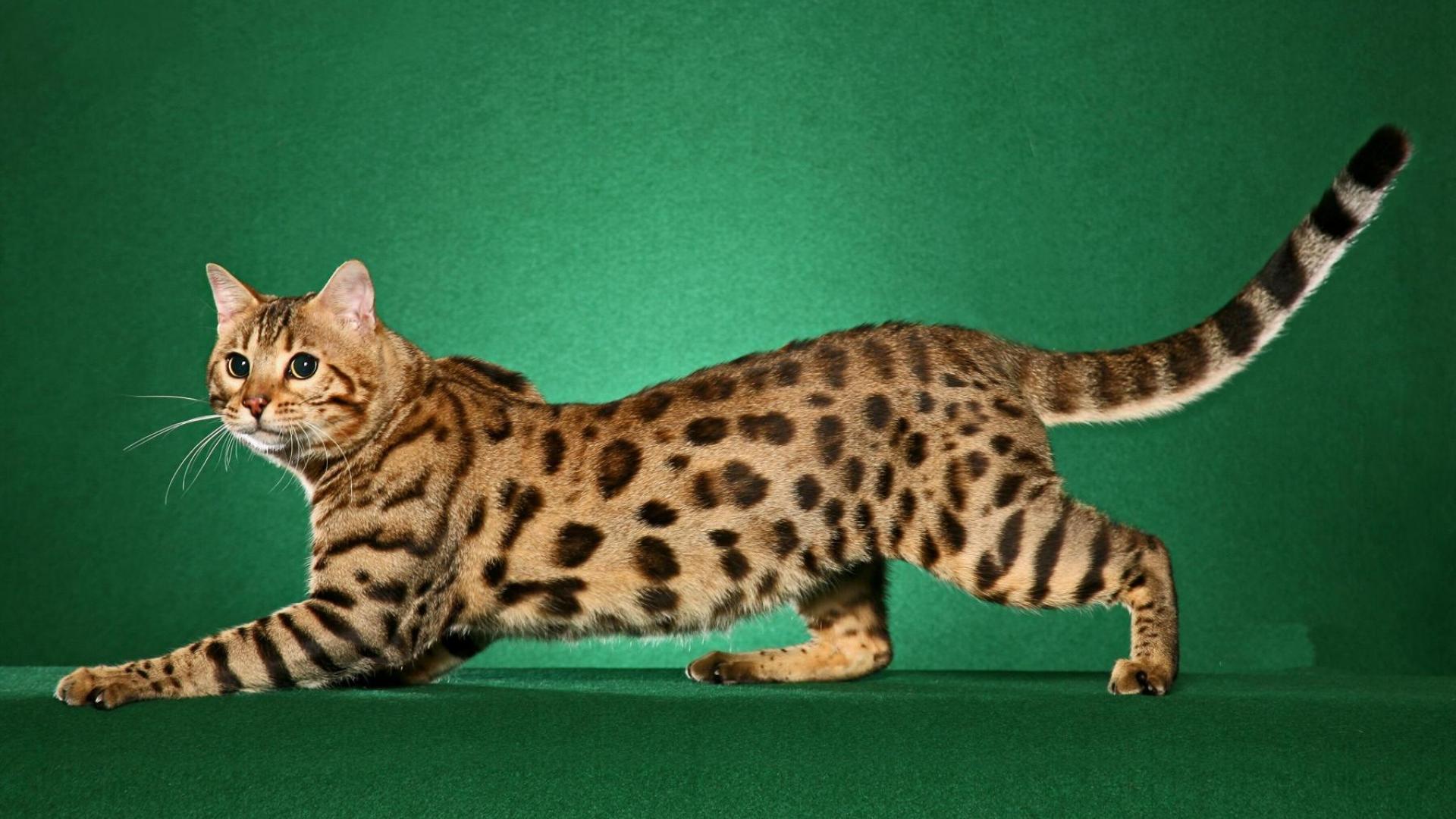
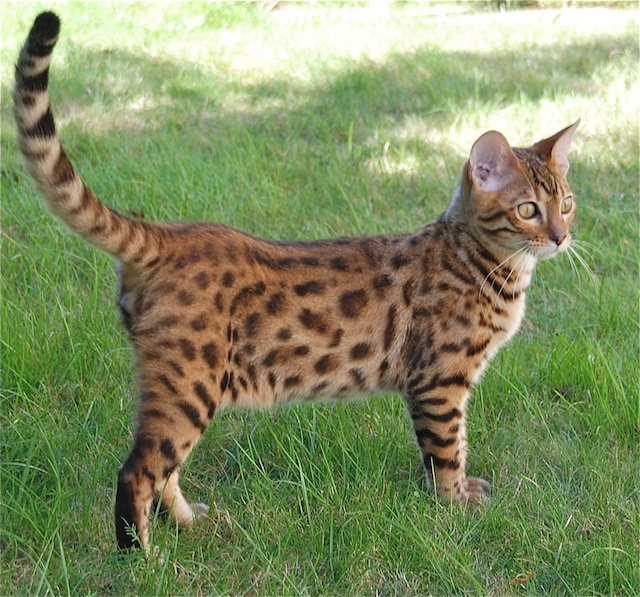

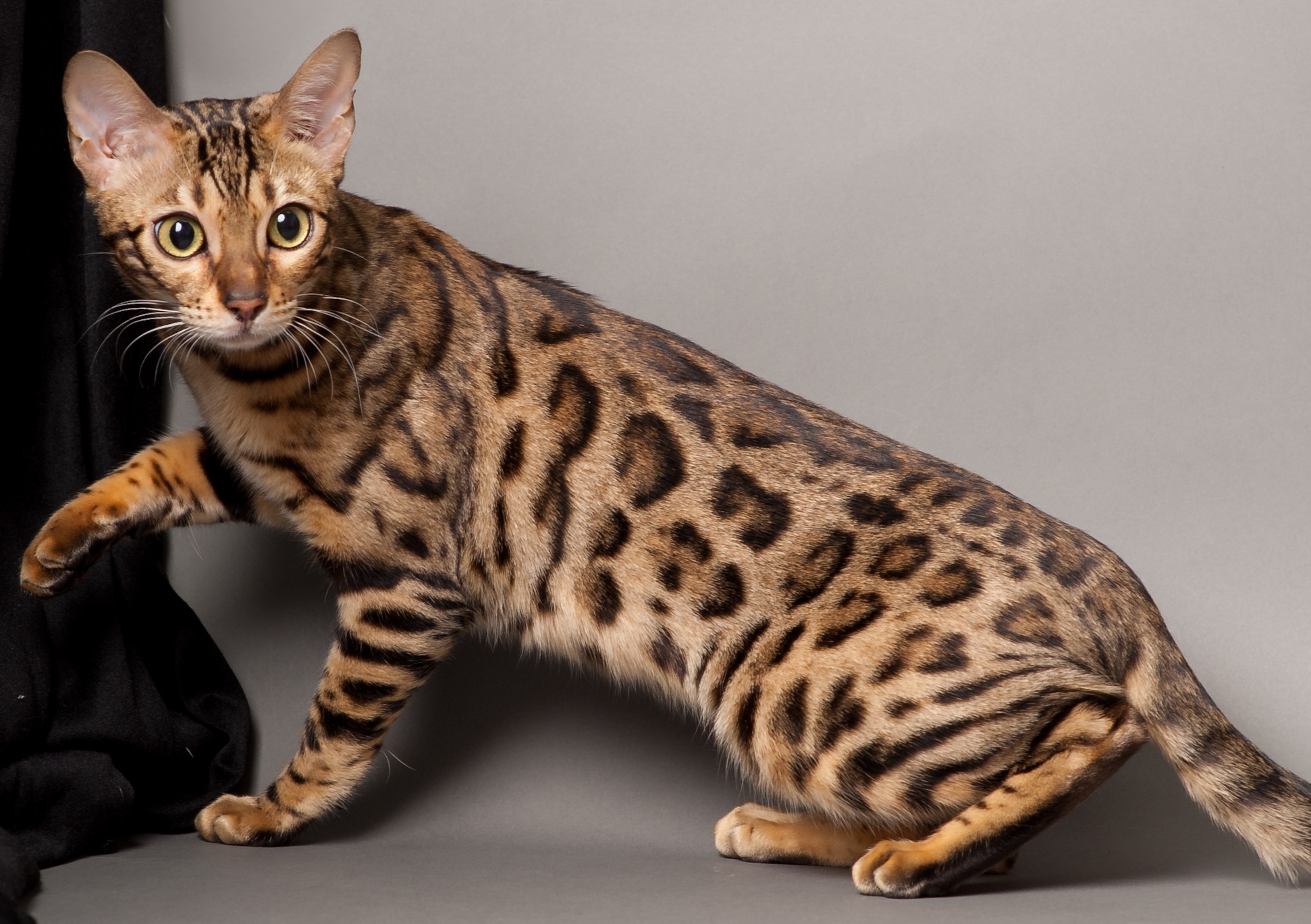
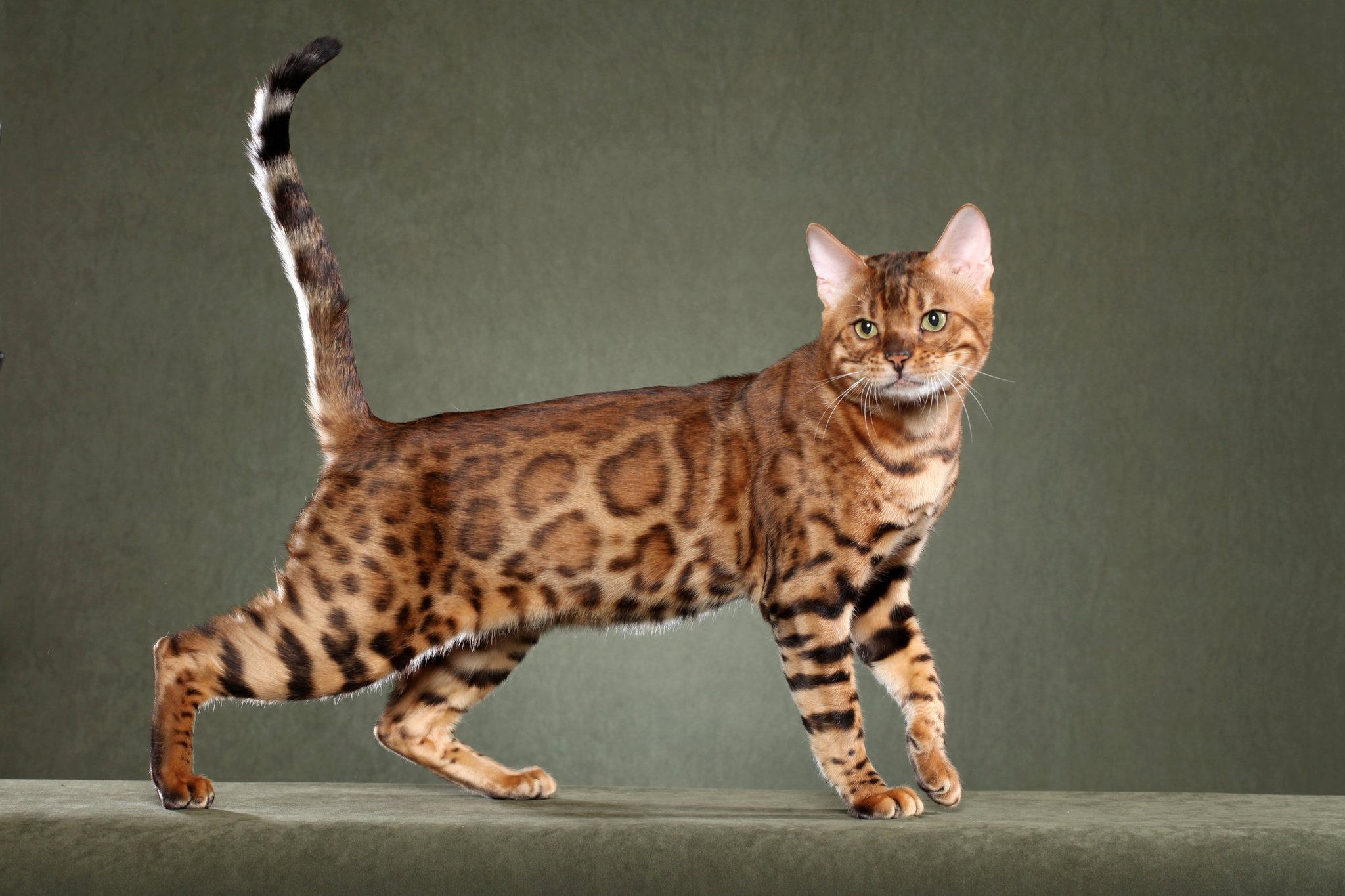



 Animalia Life
Animalia Life